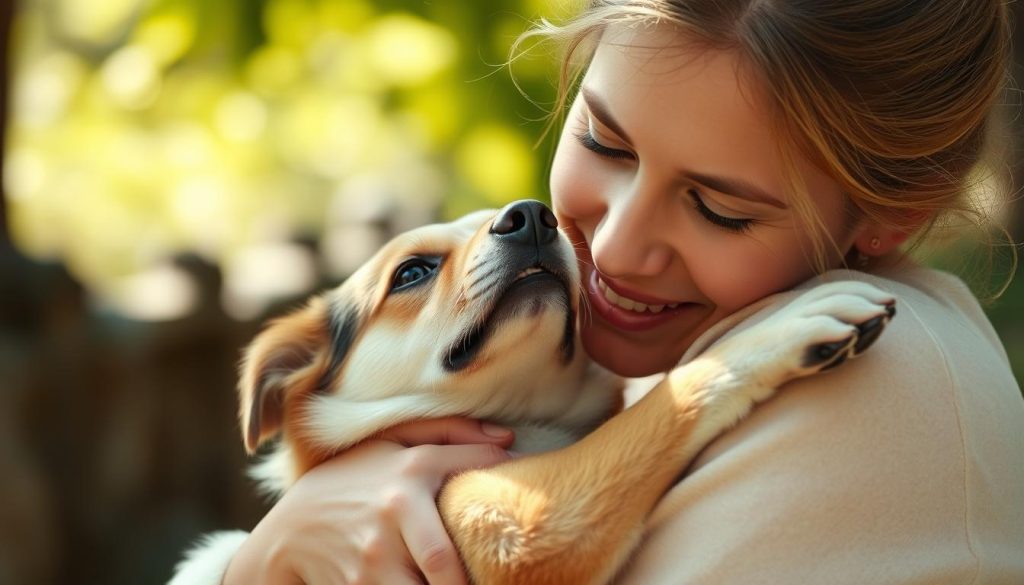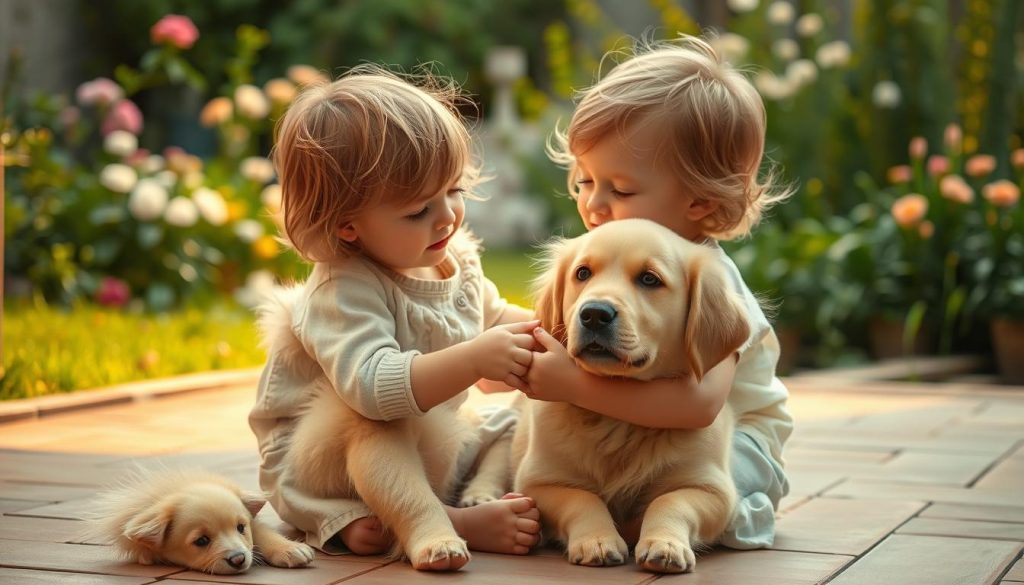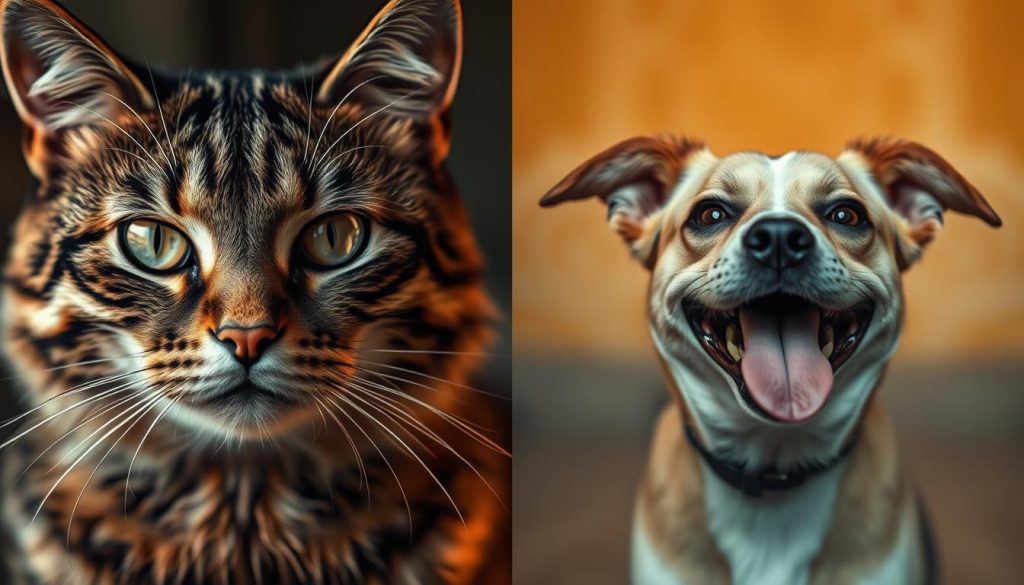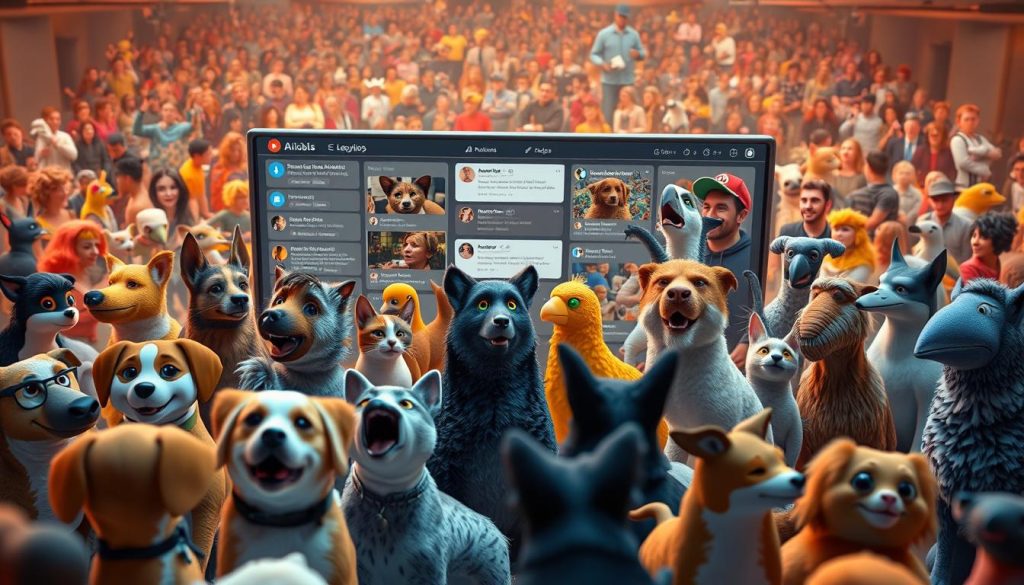Our beloved cats and dogs are more than just cherished companions; they serve as ambassadors for the entire animal kingdom. Through their unique ways of communicating and interacting with us, these furry friends teach us valuable lessons about empathy, animal welfare, and the importance of protecting wildlife. By understanding pet behavior and exploring the depths of animal communication, we can foster a deeper connection with the animal world and gain insights into the remarkable intelligence that exists across various species.
As we observe the playful antics of our cats and the loyal devotion of our dogs, we begin to recognize the complex emotions and social dynamics that shape their lives. These everyday interactions offer a glimpse into the rich tapestry of animal behavior and highlight the need for greater interspecies understanding. By paying attention to the subtle cues and vocalizations of our pets, we not only strengthen our bond with them but also develop a heightened appreciation for the diverse ways in which animals express themselves.
In the following sections, we will delve deeper into the fascinating world of animal communication, exploring how our cats and dogs serve as a bridge to understanding the broader animal kingdom. From the basics of cat sounds and dog barks to the silent language of body postures, we will uncover the hidden meanings behind their behaviors and learn how these insights can inspire us to become better advocates for all animals. Join us on this journey of discovery as we unravel the mysteries of pet behavior and celebrate the profound impact that these incredible creatures have on our lives and the world around us.
The Language of Pets: Understanding Animal Communication
From the soft meows of cats to the boisterous barks of dogs, our furry companions have a lot to say. Understanding the basics of animal communication can deepen the bond we share with our pets and help us better meet their needs. Let’s explore the fascinating world of cat sounds, dog barking, and the silent language of animal body language.
Decoding Meows: The Basics of Cat Sounds
Cats are known for their diverse range of vocalizations, each carrying a specific meaning. Short meows often indicate a friendly greeting, while longer, drawn-out meows may signal a demand for attention or food. Purring, a trademark cat sound, typically expresses contentment but can also be a sign of stress or pain. By familiarizing ourselves with these nuances, we can better interpret our feline friends’ needs.
The Barking Spectrum: What Dogs Are Really Saying
Dog barking is not a one-size-fits-all form of communication. The pitch, duration, and frequency of barks can convey a wide range of emotions and intentions. A rapid series of barks may indicate excitement or urgency, while a single, sharp bark often serves as a warning or alert. By paying attention to the context and tone of our dogs’ barks, we can gain valuable insights into their emotional states.
Beyond Words: The Power of Animal Body Language
While vocalizations are a crucial aspect of pet communication, body language often speaks louder than words. A wagging tail, a playful bow, or a tense posture can convey a wealth of information about an animal’s mood and intentions. Learning to read these non-verbal cues is essential for fostering a harmonious relationship with our pets.
| Communication Type | Cats | Dogs |
|---|---|---|
| Vocalizations | Meows, purrs, chirps, hisses | Barks, whines, growls, howls |
| Body Language | Tail posture, ear position, eye contact | Tail wagging, facial expressions, posture |
By taking the time to understand the unique language of our pets, we can strengthen our bonds, anticipate their needs, and create a more harmonious household. Whether through vocal cues or silent gestures, our furry friends are always communicating with us – it’s up to us to learn their language.
The Bond Between Pets and Humans
The human-animal bond is a powerful force that has shaped our relationships with cats, dogs, and other pets for thousands of years. This deep emotional connection brings immense joy, comfort, and meaning to our lives. Pets become cherished members of our families, offering unconditional love and support.
How Cats and Dogs Enrich Our Lives
Our furry companions enrich our lives in countless ways. They greet us with wagging tails and purrs, providing a constant source of affection and companionship. Caring for a pet teaches responsibility, empathy, and patience. Playing with cats and dogs brings laughter and relieves stress. These special bonds boost our overall well-being.

The Emotional Connection: Pets as Family
For many of us, pets are not just animals – they are family. We celebrate their birthdays, include them in holiday traditions, and grieve deeply when they pass. This emotional connection is built on trust, understanding, and shared experiences. Pets offer a unique form of social support, helping us feel less alone and more emotionally fulfilled.
Pets and Their Role in Mental Health
Beyond the everyday benefits, pets play a crucial role in supporting mental health. Emotional support animals provide comfort and stability to those struggling with anxiety, depression, and other challenges. Through pet therapy, trained animals help reduce stress, improve mood, and promote healing. Interacting with pets releases “feel-good” hormones like oxytocin, contributing to a greater sense of calm and happiness.
| Benefit | How Pets Help |
|---|---|
| Stress Relief | Petting and playing with animals lowers cortisol levels |
| Emotional Support | Pets offer comfort, security, and a listening ear |
| Social Connection | Dog walks and pet events foster human interaction |
| Sense of Purpose | Caring for a pet provides structure and responsibility |
The Importance of Animal Advocacy
Our love for cats, dogs, and other pets often extends beyond our homes, inspiring us to become advocates for all animals, including wildlife. By recognizing the sentience and inherent value of our furry companions, we develop a deeper appreciation for the diverse creatures that share our planet. This connection serves as a catalyst for animal advocacy, driving us to protect and preserve the lives of animals both domesticated and wild.
How Pets Inspire Action for Wildlife
The bond we share with our pets teaches us empathy, compassion, and responsibility. These invaluable lessons translate to a broader concern for the well-being of all animals, including those in the wild. As we witness the joy and love our pets bring into our lives, we become more attuned to the plight of endangered species and the importance of wildlife conservation. Our pets inspire us to take action, whether through supporting conservation organizations, making eco-friendly choices, or educating others about the importance of preserving biodiversity.

Celebrating Animal Rights Champions
Throughout history, countless individuals have dedicated their lives to advancing animal rights and welfare. From pioneers like Jane Goodall, who revolutionized our understanding of chimpanzees, to contemporary figures like Ric O’Barry, who has tirelessly fought against the captivity of dolphins, these animal rights activists serve as beacons of hope and inspiration. By celebrating their achievements and learning from their examples, we can all become champions for the voiceless and work towards a world where all animals are treated with respect and compassion.
Grassroots Movements: Pets as Catalysts for Change
The power of grassroots movements in driving positive change for animals cannot be overstated. Pet owners, united by their love for their furry friends, have the potential to create ripples of change that extend far beyond their immediate circles. By engaging in local animal advocacy efforts, supporting shelters and rescue organizations, and spreading awareness about animal welfare issues, pet owners can contribute to a groundswell of support for animal rights. These grassroots movements, fueled by the passion and dedication of everyday people, have the power to influence legislation, change corporate practices, and shift societal attitudes towards animals.
Lessons from Our Furry Friends
Our beloved cats and dogs offer more than just companionship; they also serve as valuable teachers, imparting important life lessons that can benefit both children and adults alike. Through our interactions with these furry friends, we can cultivate empathy, learn to interpret non-verbal cues, and develop a sense of responsible pet ownership.
Empathy: Teaching Kids Through Pets
Caring for a pet helps children develop empathy, as they learn to recognize and respond to the needs of another living being. When a child witnesses their pet’s joy, pain, or fear, they begin to understand the importance of compassion and kindness. This early exposure to empathy can foster a lifelong commitment to understanding and helping others.

Understanding Non-Verbal Communication
Pets communicate primarily through body language and vocalizations, teaching us to be more attuned to non-verbal cues. By observing our cats and dogs, we learn to interpret subtle signs of happiness, discomfort, or anxiety. This skill translates to human interactions, helping us become more perceptive and emotionally intelligent communicators.
Life Skills Learned from Pet Care
Responsible pet ownership teaches children valuable life skills, such as:
- Time management
- Consistency
- Patience
- Commitment
By taking on the daily tasks of feeding, grooming, and exercising their pets, children learn the importance of routine and dedication. They also discover the rewards that come with nurturing a living creature, building self-esteem and a sense of accomplishment.
| Life Skill | How Pets Teach It |
|---|---|
| Responsibility | Daily care tasks like feeding and grooming |
| Empathy | Recognizing and responding to a pet’s needs |
| Patience | Training and building trust with a pet |
| Commitment | Providing long-term care for a pet’s lifetime |
In essence, our furry friends serve as powerful teachers, offering lessons that extend far beyond the realm of pet care. By embracing the wisdom they impart, we can cultivate empathy, improve our communication skills, and develop the life skills necessary to become more compassionate and responsible individuals.
Felines vs. Canines: Unique Communication Styles
When it comes to pet communication, cats and dogs have their own distinct ways of expressing themselves. While both species rely on a combination of vocalizations, body language, and scent marking, the specific behaviors they exhibit are quite different. Understanding these unique communication styles can help pet owners better connect with their furry friends.

Cats are often seen as more subtle communicators compared to dogs. They use a variety of meows, chirps, and trills to convey their needs and emotions. A short meow might indicate a greeting, while a long, drawn-out yowl could signal distress or annoyance. Cats also rely heavily on body language, using their tails, ears, and posture to express themselves. A twitching tail, for example, could indicate irritation or excitement, depending on the context.
Playful Expressions: The Fun Side of Animals
Both cats and dogs engage in playful behaviors that showcase their unique personalities. Canine play often involves chasing, wrestling, and tug-of-war games, while felines tend to prefer pouncing, stalking, and batting at toys. These animal play behaviors not only provide mental and physical stimulation but also strengthen the bond between pets and their owners.
| Species | Playful Behaviors |
|---|---|
| Cats | Pouncing, stalking, batting toys |
| Dogs | Chasing, wrestling, tug-of-war |
Distinct Behaviors: What Each Pet Teaches Us
Observing the species-specific behaviors of cats and dogs can teach us valuable lessons about communication, empathy, and adaptability. Cats, for instance, remind us to be patient and attentive listeners, as their subtle cues require careful observation. Dogs, on the other hand, teach us about the importance of clear, consistent communication and the power of positive reinforcement.
By understanding and appreciating the unique communication styles of our feline and canine companions, we can become more effective pet owners and animal advocates. Taking the time to learn their language fosters deeper connections and ensures that we are meeting their physical, mental, and emotional needs.
The Role of Social Media in Animal Advocacy
Social media has become a powerful tool in the fight for animal rights and welfare. From raising awareness about important issues to connecting animal lovers and activists from around the world, platforms like Facebook, Twitter, and Instagram are playing an increasingly vital role in animal advocacy.
One of the most significant ways social media is making a difference is through the power of viral pet videos. These heartwarming clips, often featuring rescued animals or pets showcasing their unique personalities, have the ability to capture the attention of millions. As these videos spread across social networks, they not only bring joy to viewers but also raise awareness about the importance of animal adoption, proper pet care, and the work of animal shelters and rescue organizations.

Beyond viral videos, social media has also become a hub for online animal communities. These groups bring together pet owners, animal lovers, and activists to share stories, offer support, and collaborate on initiatives to improve animal welfare. From breed-specific groups to those focused on animal rights campaigns, these communities provide a space for individuals to connect, learn, and take action.
The Rise of Pet Influencers
In recent years, the phenomenon of pet influencers has taken social media by storm. These four-legged social media stars, often with millions of followers, are not only adorable but also serve as powerful advocates for animal causes. Many pet influencers use their platforms to promote adoption, raise funds for animal shelters, and educate their followers about responsible pet ownership.
| Platform | Number of Pet Influencers | Average Followers |
|---|---|---|
| 1,000,000+ | 100,000+ | |
| 500,000+ | 50,000+ | |
| 200,000+ | 25,000+ |
Building Support Through Storytelling
One of the most effective ways to inspire change through social media is by sharing compelling stories. Whether it’s a tale of a rescued animal overcoming the odds or a heartwarming account of the bond between a pet and their owner, these narratives have the power to move people and motivate them to take action. By leveraging the storytelling potential of social media, animal advocates can build a groundswell of support for their causes and inspire real-world change.
Pets in Pop Culture: A Voice for the Voiceless
From the silver screen to the pages of our favorite books, pets and animals have long been a beloved part of our cultural landscape. These furry friends not only entertain us but also serve as powerful voices for their real-life counterparts, raising awareness about animal welfare issues and inspiring empathy in audiences of all ages.
Movies and Shows That Highlight Animal Stories
Animal movies have the unique ability to captivate viewers and shine a spotlight on the joys and challenges of our four-legged friends. From classic tales like “Lassie” and “Old Yeller” to modern favorites such as “Marley & Me” and “A Dog’s Purpose,” these films showcase the unbreakable bond between humans and their pets. They also delve into important topics such as animal abuse, neglect, and the tireless work of rescue organizations.

Television series have also embraced pet-centric storylines, with shows like “The Dog Whisperer” and “My Cat From Hell” offering valuable insights into animal behavior and responsible pet ownership. These programs not only entertain but also educate, helping viewers better understand and care for their furry companions.
Literature Inspired by Our Furry Friends
Pet-themed literature has been a staple of bookshelves for generations, with authors drawing inspiration from the unconditional love and loyalty of our animal friends. From heartwarming memoirs like “Marley & Me” and “Dewey: The Small-Town Library Cat Who Touched the World” to fictional tales such as “The Call of the Wild” and “Black Beauty,” these stories celebrate the profound impact animals have on our lives.
Many of these books feature animal characters that display anthropomorphism, giving them human-like qualities and emotions that resonate with readers. This technique allows authors to explore complex themes and ideas through the lens of our furry friends, making the stories both engaging and thought-provoking.
By championing animal stories in pop culture, we give a voice to the voiceless and inspire a deeper appreciation for the creatures that share our world. As we continue to celebrate pets in movies, shows, and literature, we foster a greater understanding of their needs and encourage more people to become advocates for animal welfare.
Volunteering and Supporting Animal Shelters
Animal shelters play a vital role in our communities, providing a safe haven for homeless pets and working tirelessly to find them loving forever homes. By volunteering at your local animal shelter or adopting a pet, you can make a significant difference in the lives of these furry friends.
Why It’s Important to Help Local Shelters
Local animal shelters often operate on tight budgets and rely heavily on the support of volunteers and donors. When you volunteer your time or make a donation, you’re helping to ensure that these shelters can continue their important work. Some ways you can help include:
- Walking dogs and socializing with cats
- Assisting with cleaning and maintenance tasks
- Fostering pets in your home
- Donating food, toys, and other supplies
How Pets Influence Volunteer Programs
Volunteering with animals at your local shelter can be an incredibly rewarding experience. Not only do you get to spend time with adorable pets, but you also have the opportunity to make a real difference in their lives. Many volunteers find that working with animals helps them develop a deeper sense of empathy and compassion, which can translate into other areas of their lives.
Stories of Rescued Pets Changing Lives
One of the most heartwarming aspects of pet adoption is hearing the stories of rescued animals who have found their forever homes. These stories serve as a powerful reminder of the impact that adopting a pet can have, not just on the animal’s life, but on the lives of their human companions as well. Here are a few touching examples:
| Pet Name | Rescue Story | Impact |
|---|---|---|
| Max | Abandoned on the streets, Max was rescued by a local shelter. Despite his rough start, he quickly won over the hearts of the staff with his friendly demeanor. | Max was adopted by a family who had recently lost their elderly dog. He brought joy and companionship back into their lives during a difficult time. |
| Luna | Found as a stray, Luna was severely malnourished and had a broken leg when she arrived at the shelter. After receiving medical care and lots of love, she made a full recovery. | Luna was adopted by a young couple who had always wanted a cat. She quickly became a cherished member of their family, offering comfort and unconditional love. |
Building Awareness Through Education
Education plays a crucial role in promoting animal welfare and fostering a compassionate society. By teaching children about the importance of treating animals with kindness and respect, we can instill values that will shape their attitudes and behaviors towards all living beings.
Teaching Kids About Animal Welfare
Introducing humane education in schools can have a profound impact on how children view and interact with animals. Through age-appropriate lessons and activities, kids can learn about the needs and behaviors of various species, develop empathy, and understand the responsibilities that come with pet ownership. Some key topics to cover include:
- Basic animal care and nutrition
- Understanding animal emotions and communication
- The importance of spaying/neutering and adoption
- Respectful interaction with wildlife
Community Outreach Programs
Engaging the wider community is essential for promoting responsible pet ownership and addressing animal welfare issues. Outreach programs can take many forms, such as:
| Program | Description |
|---|---|
| Workshops and Seminars | Educating pet owners on topics like training, health care, and behavior |
| Adoption Events | Showcasing shelter animals and promoting the benefits of adoption |
| Spay/Neuter Clinics | Providing affordable services to help control pet overpopulation |
| Volunteer Opportunities | Engaging community members in hands-on animal welfare projects |
Resources for Pet Owners
Providing accessible resources is key to supporting responsible pet ownership. From online guides to local support networks, pet owners should have access to reliable information on:
- Veterinary care and emergency services
- Training tips and behavior advice
- Pet-friendly housing and travel options
- Financial assistance programs for pet care
By investing in animal welfare education and community outreach, we can create a society that values and respects the lives of all creatures, big and small. Through knowledge and compassion, we have the power to make a lasting difference for animals everywhere.
The Future of Animal Advocacy
As we look to the future, it’s clear that animal advocacy is evolving in exciting ways. Technology is playing an increasingly important role in how we communicate about and advocate for the rights of animals. From social media campaigns that raise awareness to innovative apps that help people make more animal-friendly choices, digital tools are empowering advocates to reach wider audiences and drive real change.
How Technology is Changing Communication
One of the most significant ways technology is impacting animal advocacy is by enabling advocates to share powerful stories and images instantly with a global audience. Social media platforms like Facebook, Twitter, and Instagram have become vital tools for animal rights organizations to expose cruelty, celebrate victories, and inspire people to take action. Live streaming and virtual reality are also offering immersive new ways for people to connect with animals and understand their experiences. As technology continues to advance, we can expect to see even more innovative ways to communicate the importance of animal welfare.
Innovative Approaches to Address Animal Rights
In addition to changing how we communicate, technology is also paving the way for groundbreaking approaches to animal advocacy. From plant-based meat alternatives that reduce the demand for factory farming, to artificial intelligence that can help track and prevent poaching, innovators are harnessing technology to address some of the biggest challenges facing animals today. Scientists are also using cutting-edge research to better understand animal cognition and behavior, strengthening the case for their moral consideration. As these innovative solutions gain traction, we can expect to see major advancements in the fight for animal rights.
The Growing Movement for Animal Conservation
Beyond advocating for companion animals, there is a growing global movement to protect wildlife and preserve biodiversity. Conservation organizations are using technology like GPS tracking and drone surveillance to monitor threatened species and combat illegal wildlife trade. Online petitions and viral campaigns are also rallying people around the world to pressure governments and corporations to prioritize animal conservation efforts. As more people recognize the urgent need to protect our planet’s most vulnerable creatures, the momentum behind this movement will only continue to grow.

